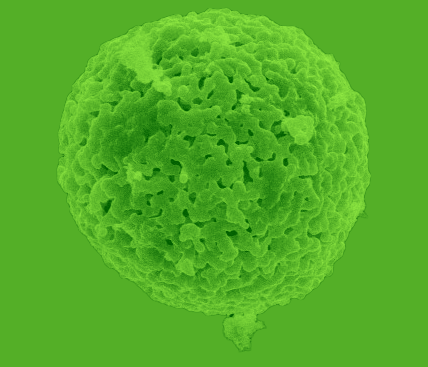Glossary
The immuno-oncological context

Glossary

The "immuno-oncological" context
Tumour antigen:
A molecule (totally or partially consisting of peptides) specifically present on the surface of tumour cells, absent or fairly rare on surrounding normal cells.
The presence of these tumour antigens can be exploited in immunotherapy to stimulate immune response against cancer cells.
Apoptosis:
A process of programmed cell death that plays an important role in the natural prevention of cancer growth by eliminating damaged or misplaced cells.
As a result, its dysfunction (deregulation) can lead to many pathologies.
Autologous:
Defines the origin of a collection of cells or tissues from a human or animal patient and re-administered to itself.
Biopsy:
Removal of a tissue or organ fragment (skin, liver, lung, colon wall, gland, ganglion, etc.), for microscopic analysis.
A biopsy aims to identify and examine cancer cells to assess their degree of aggressiveness and establish a treatment strategy.
Dendritic cells:
Derived from bone marrow, they are present in epithelial and lymphoid tissues and develop fine membrane projections.
They function like sentinels and know how to present antigens (APC: Antigen presenting cell) to naïve T cells to activate them and induce the adaptive immune response.
Major histocompatibility complex (MHC):
Portion of a chromosome that several genes capable of encoding (producing) molecular assemblies intended to bind peptides (protein fragments).
The association of MHC and peptides linked to it are presented to be recognised by T lymphocytes to activate them.
There are 2 broad categories of MHC:
· MHC class I, which has peptides mainly synthesised in the cell and which is associated in the endoplasmic reticulum. It is recognised by the CD8+ cytotoxic lymphocyte category
· MHC class II which has peptides derived from extracellular proteins that have previously been internalised by phagocytosis. It is recognised by the CD4+ helper lymphocyte category
Cytapheresis:
A technique that consists in taking blood from a patient and then filtering and/or centrifuging it to isolate, separate and extract certain cells before reinjecting the other cells to the same patient.
It is used in particular for certain so-called “personalised” immunotherapies (since the patient’s own cells are used) but requires specialised medical services to guarantee the patient’s safety.
Etiology:
Study of the elements that cause diseases by looking for the causes, origins and their mechanism of evolution.
Hydroxyapatite (or Hydroxylapatite):
Constituting the mineral phase of bone tissue, this molecule is perfectly synthesised for various uses and medical indications in orthopaedics, cosmetology and oncology. It is a mineral molecule of the calcium phosphate family which crystallises in the form of a so-called "hexagonal" system. It contains two hydroxyl ions (OH-) which can be replaced by fluorine (fluoroapatite) or chlorine (chloroapatite) ions.
Immunotherapy:
A therapeutic approach that aims to involve the patient's immune system against his disease.
In the case of cancer, it does not directly attack the tumour, but stimulates the immune cells involved in its recognition and destruction (Inserm).
Inflammasome:
A multiprotein complex located in the cytoplasm (inside) of several cell types involved in the immune system.
These cells under stress (infection, cancer) activate this system to synthesise and induce the release of pro-inflammatory molecules.
Lymphocyte :
A family of cells found in blood, lymphoid tissues and most organs.
They express (produce) antigen receptors and ensure immune responses.
Lymphocytes include B and T lymphocytes (adaptive immunity) and NK (Natural Killer) cells, which provide certain innate immune responses (Source: The basics of fundamental and clinical immunology).
Metastasis:
A tumour formed from cancer cells that detached from a first tumour (primary tumour) and migrated through lymphatic vessels or blood vessels to another part of the body where they settled. This is not a new cancer but the initial cancer that has spread. The risk of developing metastases depends on the characteristics of the first tumour.
Mutation:
Focused modification (i.e. limited in one or a few rare places) of the genetic code that causes the manufacture of a non-functional protein.
Immune system:
Consisting of a complex and coordinated set of biological reactions for recognition and defence against elements foreign to each human or animal organism. We speak of discrimination between the self or the non-self with the desired consequence of the destruction of the non-self.
The immune system protects us from viruses, bacteria, parasites and other "foreign" particles or molecules (including cancer cells).
The immune response is the activation of immune system mechanisms in the face of recognition of non-self, in the face of aggression (microbial infection) or dysfunction (cancer) of the body.
We can differentiate between:
· innate (or natural or native) immunity that is always present and ready for activity in healthy individuals and,
· adaptive (or specific or acquired) immunity that requires lymphocyte proliferation and differentiation in response to pathogens before effective defence.
Heat Shock Proteins:
Proteins whose synthesis is triggered in a living cell under the dependence of thermal shocks or other stresses.
They allow the spatial shaping of nascent proteins (passage from their linear form to a 3-dimensional structure by folding mechanisms). We also call them chaperone molecules.
Toll-type receptors (TLR):
A family of innate immune system receptors for recognising particular molecular patterns associated with cell damage (or death) caused by a pathology.
They are expressed on the surface of many cell types and recognise different structures to transmit signals that lead to the expression of inflammatory genes (Source: The basics of fundamental and clinical immunology).